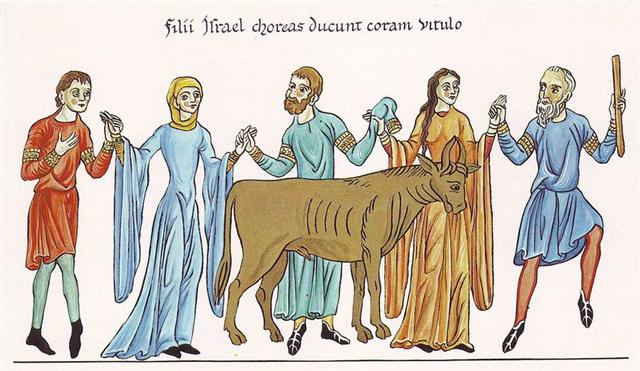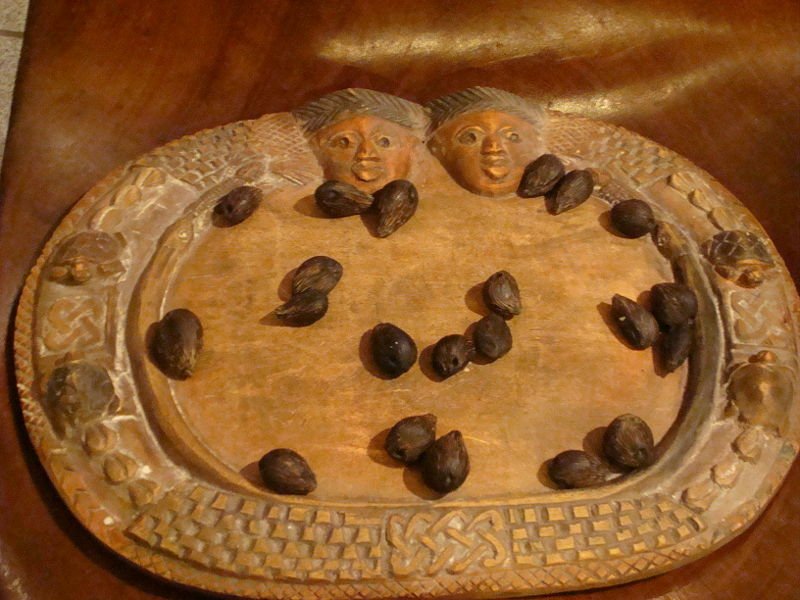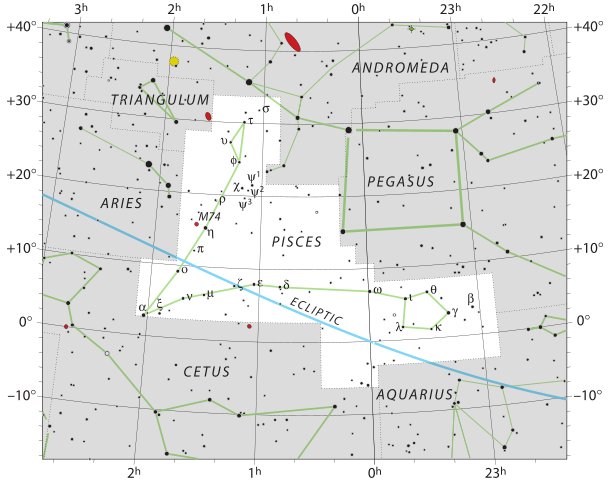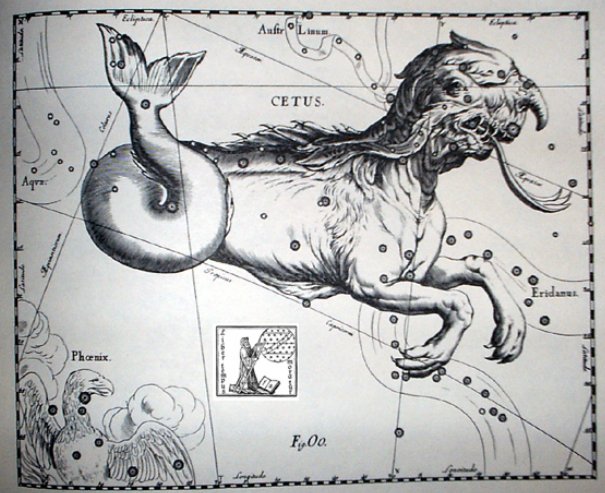Bb2.5 It seems reasonable to assume the creator of the B text associated his glyph number 455 (→ 355 + 100) with an ancient northern winter solstice, whose stars determined the relevant images for the occasion, and which currently were visible in the background of the Full Moon around September 1, for the Sun had preceded (come earlier) since then, making his conjunction with the nakshatra position of the Mouth of the Fish (Fom-al-haut) arrive not in day 180 (JUNE 29) but about 2 months later (= 10 months earlier). The mouth of something means its beginning, and the region of the fishes surely was in the Sea: ... This [σ Sagittarii] has been identified with Nunki of the Euphratean Tablet of the Thirty Stars, the Star of the Proclamation of the Sea, this Sea being the quarter occupied by Aquarius, Capricornus, Delphinus, Pisces, and Piscis Australis. It is the same space in the sky that Aratos designated as Water ...
The apparent addition with not 2 months but with 100 days should partly be due to how the creator of the B text suggested the beginning was at the Gate of the Goat (ε Aurigae, the Male Goat, Almaaz, *74.7) instead of at Bull's Eye (ε Tauri, Ain, *65.7).
100 - (74.7 - 65.7) = 91 (= 364 / 4). I.e. 455 (Bb2-3) → 364 + 91 (Ba3-4). Since the days of the dance around the Golden Calf the precession had pushed the fixed stars around *64 of my right ascension days ahead in the Sun calendar.
But then we must add 16 days because anciently they waited for the return to visibility of the heliacal stars → 64 + 16 = 80 → 0h at March 21 (80, *365). Furthermore, 91 - 80 = 11 corresponds to the day distance from the solstice in December 21 (355) to the beginning of the Gregorian calendar in January 1 (366). Presumably this idea of Fum-al-haut and Al-kes together identifying the proper the places for the ancient solstices, might - it could be argued - explain why the head has been drawn as missing (kore) in the sitting figure depicted in Bb2-5.
A bird will tuck his head below his wing when it is time to sleep (moe). Although the sign at the top in Bb2-5 is not a flipper but another type of limb: ... By repeating a charm, she opened the two shells and slipped inside. She could see nothing, because the sun and the moon did not then exist; and then, she could not stand up because there was not enough room in the shellfish. Constantly hunting about she at last found a snail. To endow it with power she placed it under her arm, lay down and slept for three days. Then she let it free, and still hunting about she found another snail bigger than the first one, and treated it in the same way. Then she said to the first snail: 'Can you open this room a little, so that we can sit down?' The snail said it could, and opened the shell a little ...
Perhaps the 'vaha mea' mouth of the Southern Fish in Pisces (Simmah, γ) could not be seen until after 3 nights' sleep. But from there, it seems, the women would be awake and dancing in a line (ihi). Consulting Allen I find a plausible explanation for the name Simmah, viz. the 'horn' (tara): ... Strassmeier and Epping, in their Astronomishes aus Babylon, say that there its stars formed the third of the twenty-eight ecliptic constellations, - Arku-sha-rishu-ku, literally the Back of the Head of Ku, - which had been established along that great circle milleniums before our era; and Lenormant quotes, as an individual title from cuneiform inscriptions, Dil-kar, the Proclaimer of Dawn, that Jensen reads As-kar, and others Dil-gan, the Messenger of Light. George Smith inferred from the tablets that it might be the Star of the Flocks; while other Euphratean names have been Lu-lim, or Lu-nit, the Ram's Eye; and Si-mal or Si-mul, the Horn star, which came down even to late astrology as the Ram's Horn. It also was Anuv, and had its constellation's titles I-ku and I-ku-u, - by abbreviation Ku, - the Prince, or the Leading One, the Ram that led the heavenly flock, some of íts titles at a different date being applied to Capella of Auriga. Brown associates it with Aloros, the first of the ten mythical kings of Akkad anterior to the Deluge, the duration of whose reigns proportionately coincided with the distances apart of the ten chief ecliptic stars beginning with Hamal, and he deduces from this kingly title the Assyrian Ailuv, and hence the Hebrew Ayil; the other stars corresponding to the other mythical kings being Alcyone, Aldebaran, Pollux, Regulus, Spica, Antares, Algenib, Deneb Algedi, and Scheat ... And according to Hevelius the Cetus 'fish' should also have a horn ('tooth') in front:
|
||||||||||||||||||||||||||||||||||||||||||||||||||||||||||||||||||||||||||||||||||||||||||||||||||||||||||||||||||||||||||||||||||||||||||||||||||||||||












